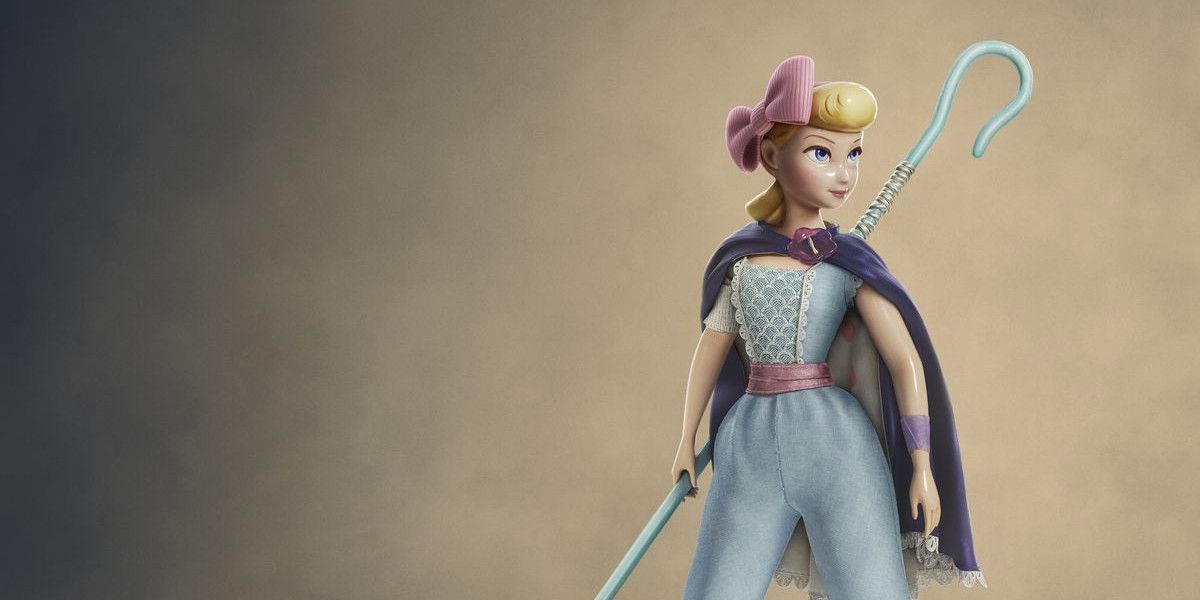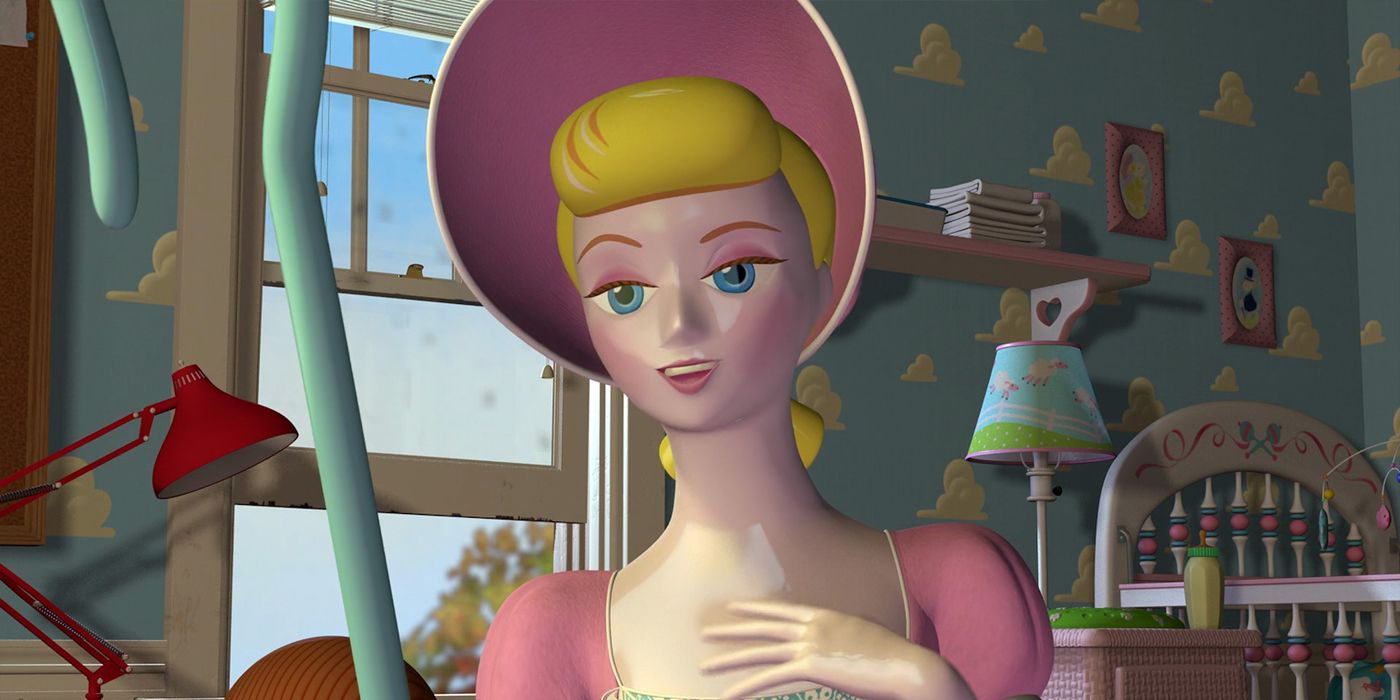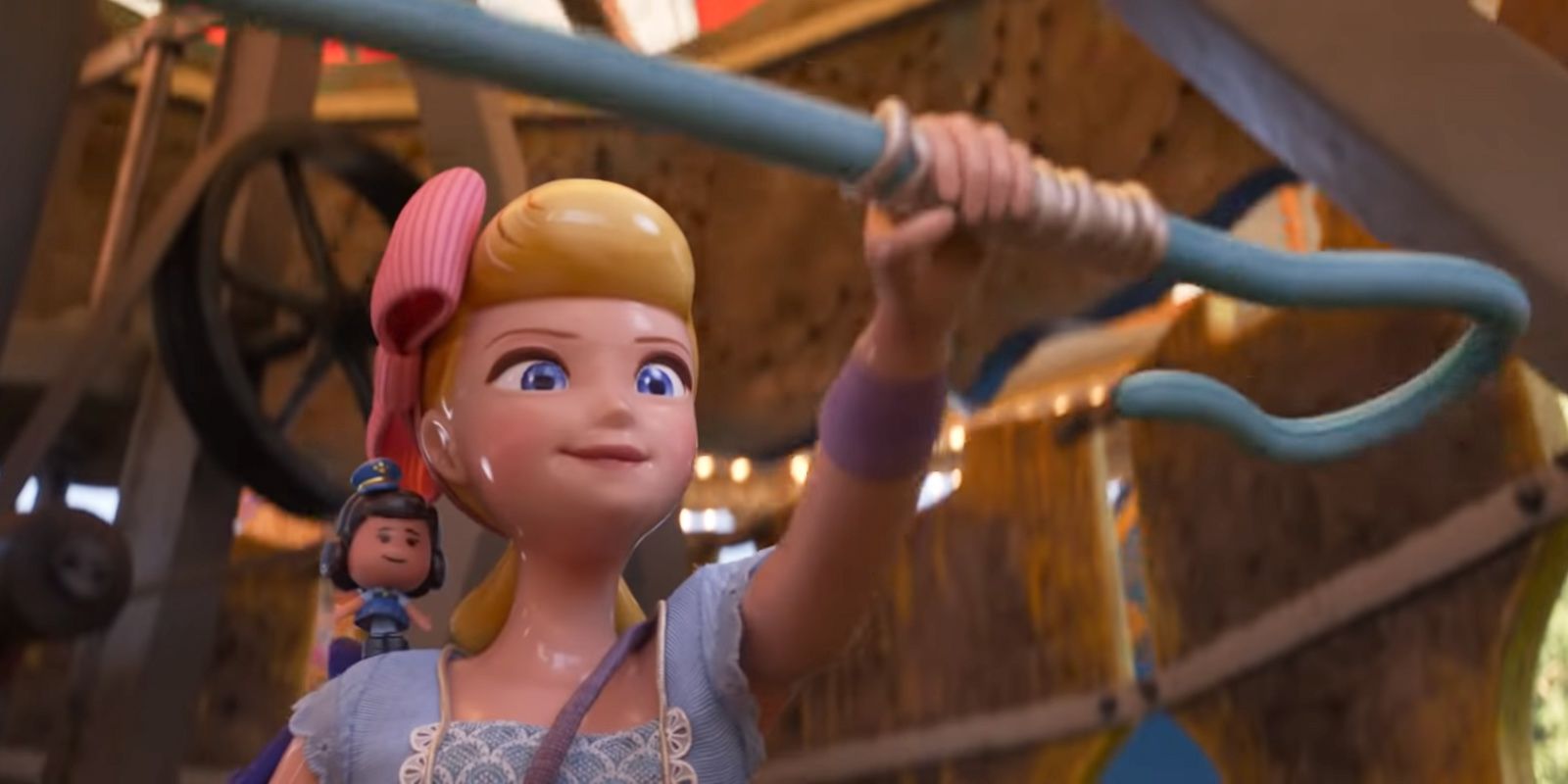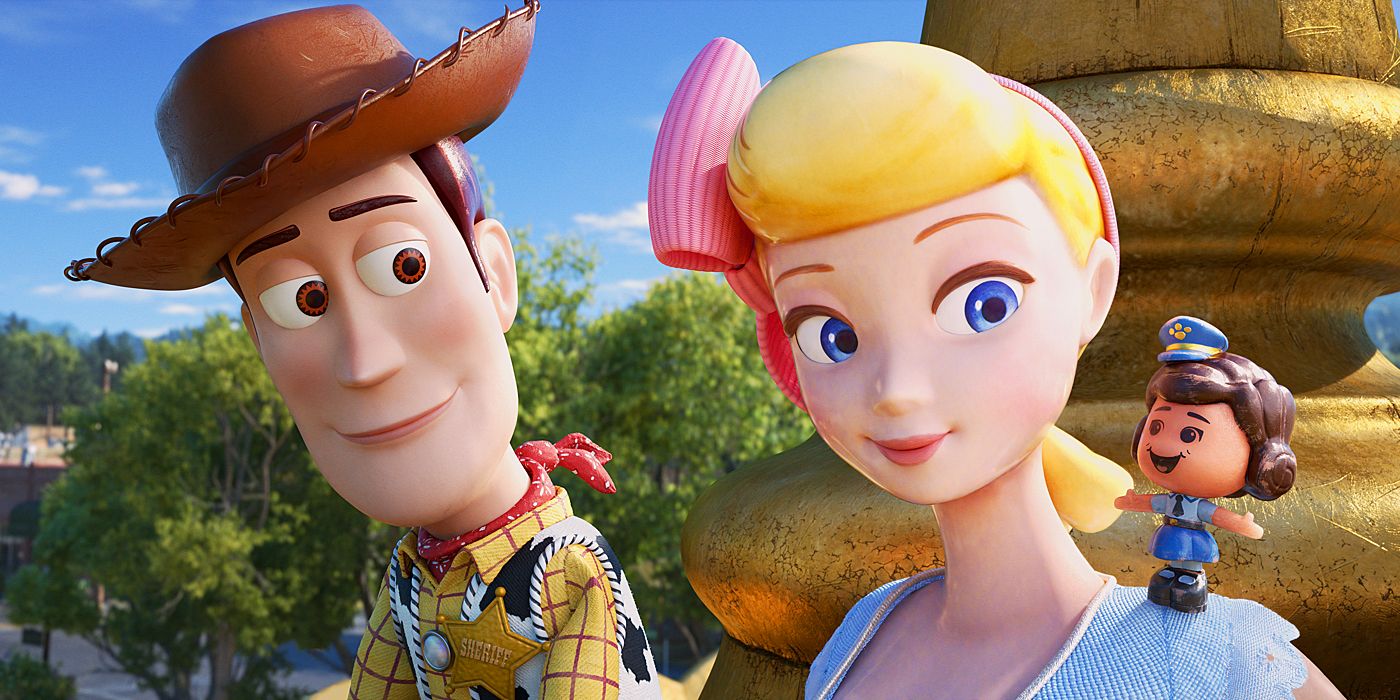WARNING: The following article contains spoilers for Toy Story 4, in theaters now.
People associate Bo Peep with being lost. “Little Bo-Peep has lost her sheep” is a famous line of poetry many of us learned as children. In the Toy Story franchise, Bo was never lost, but she wasn’t a major character. She only got lost in a story that focused on the relationship between a boy and his toys.
Bo Peep was technically a part of Molly’s room as the lamp that functioned as a night light for Molly to sleep better. In Toy Story and Toy Story 2, Bo Peep’s appearance is exactly what you would envision when you read the Mother Goose poems. She’s very blonde and very pink with a porcelain face. Her look was completed with frills and a bonnet. Bo Peep was the picture of exaggerated femininity.
Bo’s function in the first two Toy Story movies was stereotypical, like her appearance -- she was only around to serve as a love interest for Woody. With the time jump that happens in Toy Story 3, the writers clearly didn’t want to spend the time to explain when Bo left. Her absence was explained with literally one line by Woody at the beginning of Toy Story 3. We caught up with the toys in Andy’s room in a time where they had already accepted their losses, so she wasn’t mentioned after that.
Gone but not forgotten, Bo Peep comes back in Toy Story 4 with a new look and a new outlook on life. She is no longer defined by her relationship to Woody, thus making her much more interesting and a more significant character for children today.
To give viewers more context, Toy Story 4 begins with a flashback of the day Bo Peep was taken out of the house. She’s the leader of “Operation Pull Toy” while Woody does the work of rescuing RC from a flooding rain gutter. This scene shows more of the dynamic of their relationship, as well as more of her personality, which we didn’t get much of in the first two Toy Story films.
When she’s placed in a giveaway box and taken out of the house, Woody follows her to bring her back. His instinct is to rescue her, and Woody usually acts on his instincts. But, she comforts him by saying, “I’m not Andy’s toy. It’s time for the next kid.” Woody almost stays with Bo until he hears a frantic Andy telling his mom that he’s lost Woody.
When Woody catches up with Bo Peep again, we find out she’s been on her own for seven years. She still has her sheep, she has a new (and adorable) best friend in Giggles McDimples, and she uses her staff as a tool and a weapon. She’s resourceful, smart and can fight her way out of a bad situation. She’s come a long way from the Bo Peep we used to know.
Bo has really built a life for herself -- being a “lost toy” isn’t a negative thing for her. If she wants it, she can still get play time with kids at playgrounds or carnivals, and it’s enough. She tells Woody, “Who needs a kid’s room when you can have all of this?” Meanwhile, Woody is still hung up on returning to Bonnie even though Bonnie has moved on to preferring other toys over him. Woody is unable to see the value of Bo’s lifestyle for a good portion of the film.
Against her better judgment, Bo helps Woody infiltrate the same antique store she escaped from seven years ago. Woody acts on impulse, as he does, and Bo gets angry with him because she was the leader of the operation, not him. Because he didn’t go with the plan, her sheep are in trouble. Viewers see the value of Bo’s leadership skills and the consequences of what happens when you act rashly. This reinforces that not only are women capable of being leaders, but they should be taken seriously when they are in leadership positions.
Woody is confused that Bo Peep doesn’t want a kid, which is pretty symbolic for a character that has broken out of the yokes of traditional femininity. For so long, female characters were defined by their relationship to men and if they had a kid. Bo Peep makes it clear she doesn’t want a kid to be attached to, and it takes a while for Woody to understand this. However, he eventually accepts her lifestyle choice and chooses to follow her.
This is huge, especially for a children’s movie. In a more traditional story, perhaps even if this film came out closer to the first two Toy Story movies, Bo Peep would have been more tempted to go with Woody back to Bonnie. Instead, as a marker of growth and modernity, Woody leaves his old life behind and goes with Bo. Like Bo pointed out, Woody was the toy that was lost, not her, and he ultimately finds his place as a partner for her.
Bo Peep and Woody are good partners for each other, which we saw both in the flashback and the events in Toy Story 4. Woody has learned not to stay with someone who doesn’t want him (Bonnie), which is another pretty deep message for children to consider. Bo is the shepherdess of telling characters that they need to be who they are in this film, which she does for Woody and Duke Caboom. She loves Woody for who he is, especially his loyalty, which is a great trait to look for in a partner.
Toy Story 4 modernized Bo Peep in all aspects of her character. No longer content with “sitting on a shelf waiting for life to happen,” Bo took an active role in making her life happen. Bo Peep is still little, but neither her sheep nor she is lost.
Directed by Josh Cooley, Toy Story 4 stars Tom Hanks, Tim Allen, Joan Cusack, Keanu Reeves, Annie Potts, Don Rickles, Estelle Harris, Wallace Shawn, John Ratzenberger, Jeff Pidgeon, Blake Clark, Keegan-Michael Key, Jordan Peele and Tony Hale.




